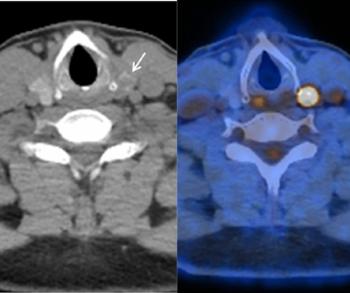Nine Takeaways from New Review of PSMA PET/CT and Whole-Body MRI for Advanced Prostate Cancer
In a new review from the European Society of Urogenital Radiology (ESUR), researchers discuss the merits and limitations of PSMA PET/CT and whole-body MRI (WB-MRI) for patients with advanced prostate cancer.
Offering current perspectives on the use of prostate-specific membrane antigen (PSMA) positron emission tomography (PET) and magnetic resonance imaging (MRI) in patients with advanced prostate cancer (PCa), the Prostate MRI Working Group of the European Society of Urogenital Radiology (ESUR) has authored a new review of the current evidence.
Here are nine takeaways from the review, which was recently published in
- For the detection of pelvic nodal and distant metastases in patients with high-risk PCa, researchers have shown that PSMA PET/CT offers a 47 percent higher sensitivity and 7 percent higher specificity in comparison to bone scan and computed tomography (BS-CT).
2. In another study of patients with metastatic hormone-sensitive
3. In a 2025 comparative study involving patients at high-risk for metastatic PCa, an accelerated WB-MRI protocol offered higher detection of local tumors (87 percent vs. 77 percent) and oligometastatic PCa (19 percent vs. 11 percent) in comparison to PSMA PET/CT. The study authors also noted that PSMA PET/CT provided better detection of lymph node involvement (5 mm median small axis) in contrast to WB-MRI (40 percent vs. 29 percent).
4. For staging accuracy and risk stratification of patients with mHSPC, researchers found that WB-MRI provided 25 percent higher detection of bone-only disease, 27 percent higher detection of high-volume disease and 26 percent higher detection of de novo metastatic disease in comparison to BS-CT. The study authors also noted a 16 percent lower detection of lymph node-only metastases with WB-MRI.
5. Guidelines from the American Society of Clinical Oncology (ASCO) reserve PSMA PET for cases involving negative or equivocal findings on initial BS-CT, or when the prognosis or management has been altered for patients with low-volume disease. However, guidelines from the National Comprehensive Cancer Network (NCCN) and the European Association of Urology (EAU) recommend PSMA PET for initial staging of patients with intermediate and high-risk PCa.
6. The Response Evaluation Criteria in Prostate-specific Membrane Antigen (PSMA) PET/CT (RECIP 1.0) framework for assessing radioligand therapy (RLT) treatment has demonstrated “excellent” inter-reader agreement with visual and quantitative evaluations, according to the review authors.
7. However, the researchers acknowledged that the flare phenomenon and decreased PSMA expression resulting from the suppression of androgen receptor signaling can affect the reliability of PSMA PET evaluations of tumor response after the use of androgen deprivation therapy (ADT) and androgen receptor pathway inhibitors (ARPIs).
8. Noting a reduced likelihood of flare responses that one may see with PSMA PET, the review authors said WB-mpMRI offers improved precision for differentiating treatment response in cases involving bone metastasis.
9. The review authors maintained that WB-MRI and PSMA PET both facilitate the use of advanced therapeutics in this patient population. While WB-mpMRI offers quantitative insights and high specificity for active disease, the researchers said PSMA PET offers detailed evaluation of metastatic tumor sites as well as prognostic correlations for progression-free and overall survival outcomes.
Newsletter
Stay at the forefront of radiology with the Diagnostic Imaging newsletter, delivering the latest news, clinical insights, and imaging advancements for today’s radiologists.




























